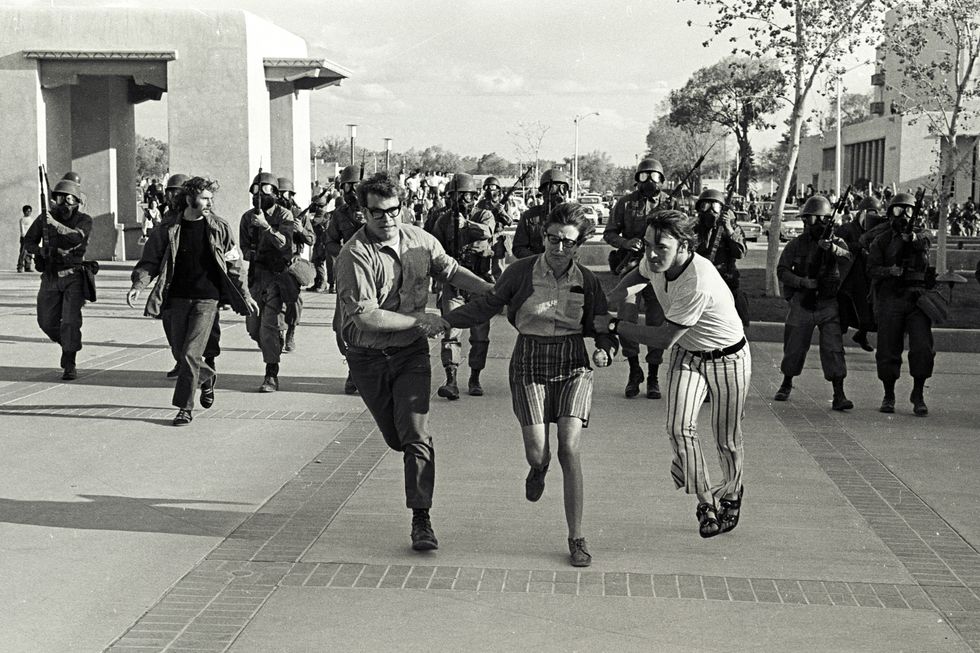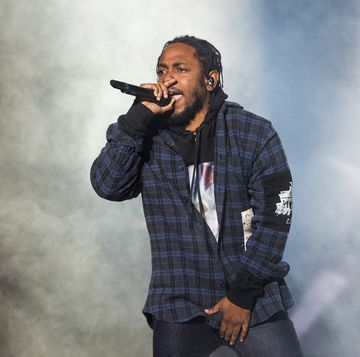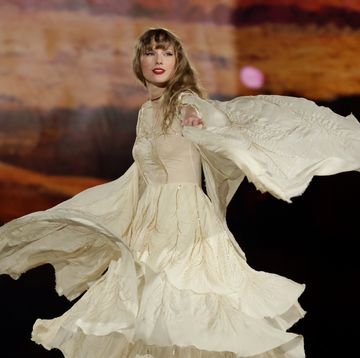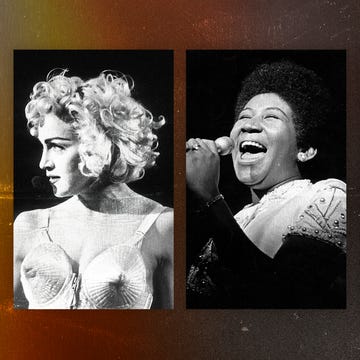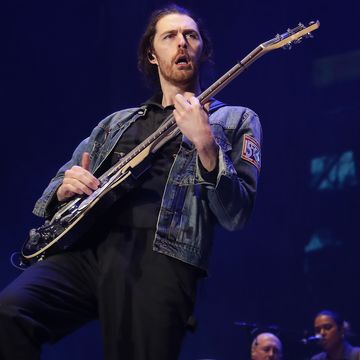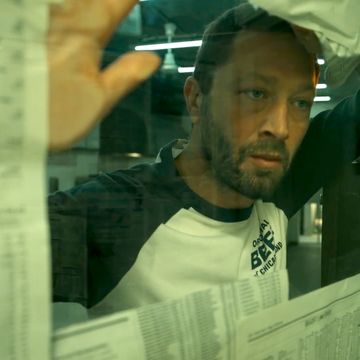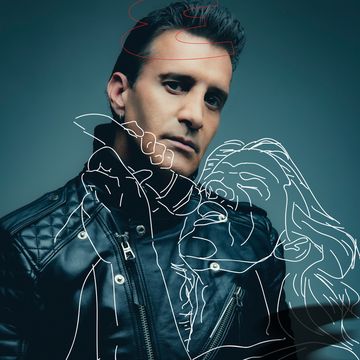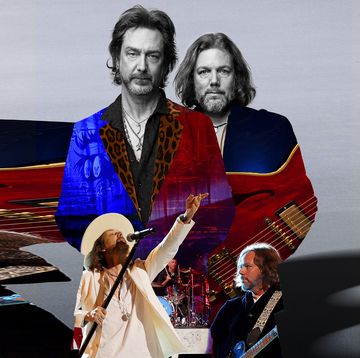Fifty years ago this month, Neil Young changed the trajectory of his career and music history forever—catapulting himself from simple songwriter to iconic protest singer with one song. That song was "Ohio."
Written and recorded in the aftermath of the massacre of four students on the campus of Kent State University, on May 4, 1970, “Ohio” resonated immediately and became identified as one of the anthems of the anti-Vietnam War movement. It has endured as a masterful, signature piece of political activism as songwriting.
“What was so important about that song was that it didn’t let the moment die,” David Karen, a sociology professor at Bryn Mawr College tells me. “Neil Young underlined just how corrupt and awful the government was, not only about Vietnam.”
The song has served as a turning point. Before “Ohio,” Young had achieved a modicum of fame in Buffalo Springfield and from the appeal of his first two solo albums, the eponymous Neil Young and Everybody Knows This Is Nowhere, which had been released in 1969. That same year, Young joined the songwriting supergroup Crosby, Stills, and Nash, for whom he would eventually write "Ohio."
Today, of course, Young is defined by his lifelong activism, but in early 1970, before the release of "Ohio," there was no real indication of the protest singer he was about to become. He had staked his reputation on singing memorable snapshots of twisted love songs—perhaps most famously, “Down by the river/I shot my baby”—that wrapped neatly around catchy, FM radio-friendly guitar riffs, in such songs as “Down by the River,” “Cowgirl in the Sand” and “Cinnamon Girl.”
On déjà vu, the highly successful first album consisting of Crosby, Stills, Nash and Young, released in March 1970, Young's contributions were primarily folk-leaning pop tracks. On "Helpless" he mused about the serenity of the Ontario town he had left behind to seek fame and fortune in Los Angeles. “Country Girl" was one of his then-trademark twisted love songs wrapped around heavy musical backing. He co-wrote “Everybody I Love You,” which might have been embraced by whatever hippies lingered from the Summer of Love, with his pal Stephen Stills.
Within the supergroup Young might have been voted Least Likely to Write a Protest Anthem. After all, Stills had already achieved fame for the unforgettable “For What It’s Worth” (“There’s something happening here/What it is ain’t exactly clear”) in the Buffalo Springfield. David Crosby had written and sung “Long Time Gone,” on the Crosby, Stills and Nash breakthrough album the year before, and “Almost Cut My Hair on déjà vu.
When he appeared on Howard Stern’s radio program in 2013, Graham Nash vividly recounted the circumstances surrounding the creation of “Ohio.” David Crosby, his band mate in CSNY, excitedly called Nash and made an urgent request, which stunned Nash at the time: “Book the (recording) studio right now!” Nash recalled Crosby telling him. “I’m coming down tomorrow. Wait until you hear this song!”
Crosby had shown Young the famous photo of a young woman named Mary Ann Vecchio knelling over a fallen student named Jeffrey Miller during Vietnam War protests on the campus of Kent State University. Miller had been killed by a bullet fired by a member of the Ohio National Guard and the photo ran on the cover of Life magazine. Young saw the song, and as Crosby told Nash, "I saw Neil walk off with his guitar into the woods. And he comes back an hour later with this song.”
Crosby, Stills and Nash were blown away by Young’s burst of inspiration and decided not only to record the song at once, but to release it as quickly as possible, even though the band was making a sizable financial sacrifice in the process.
“We had ‘Teach Your Children’ (out),” Nash said. “It was already in the top 20. It was going towards the top of the charts. We put out ‘Ohio’ immediately—and killed our own single because we thought it was more important to talk about America killing its own children than having a hit record.”
"Ohio" was an immediate success with its crunching guitar riff and Young's piercing, haunting message:
Tin soldiers and Nixon coming
We’re finally on our own
This summer I hear the drumming
Four dead in Ohio
Looking back, Young made a bold, if shrewd, choice to mention Nixon by name. The move heightened the immediacy and drama of the lyrics. Nixon seemed all-powerful in 1970. It would be two years before the Watergate scandal would explode and four years until it drove the nation’s 37th president from his office.
Not even Bob Dylan—who had galvanized young people in the early 1960s with incendiary tracks about civil rights and war—had name-checked a politician.
In fact, as “Ohio” was receiving heavy airplay on FM radio, Dylan came out with his new album. Entitled Self Portrait the double-album seemed so socially inconsequential in the moment that music critic Greil Marcus famously and bitterly began his Rolling Stone review with these four blunt words: “What is this shit?”
By contrast, “Ohio” made listeners take notice.
“It was a modern rock tune, not a folk song with roots in the long ago,” Jim Fusilli, an author and the former rock and roll critic of The Wall Street Journal, tells me. Besides “the catchy opening riff,” Fusilli says, it contained the indelible chant, “four dead in Ohio.”
The song was a commercial hit, too. It reached Number 14 on the influential U.S. Billboard Hot 100 list. This achievement is even more striking when you consider that CSNY already had a song, “Teach Your Children” that was a chart success.
And even in the context of many protest songs of the time, "Ohio" remains a unique achievement of the moment—and one of the main reasons it's remembered as such a powerful song today. John Lennon’s “Give Peace A Chance,” which came out the year before, sounds like a singalong compared to the rawness of the electric backing and the snarl of Young’s vocals. Stephen Stills’ song, “Find the Cost of Freedom,” the b-side of “Ohio” was a hymn played back-to-back with Young's song. “Ohio” also had an immediate impact on Young’s peers. Steve Miller, never confused with a crusading musician, included a song called “Jackson-Kent Blues” on his 1970 album, Number 5. The song encompassed killings that had occurred on the campus of Jackson State College (now known as Jackson State University) on May 15, 1970, in Mississippi.
Young himself followed “Ohio” on his next album, After the Goldrush, with “Southern Man,” a message to racism in the American south, and “After the Goldrush,” which unleashed Young’s passion for the environment. The album came out in the fall of 1970 and remains one of Young’s most popular works.
Although the song has remained a staple of protest music for half a century, Young has shied away from talking about “Ohio,” preferring to let the song speak for itself.
When Young rejoined Crosby, Stills, and Nash in 2006 at the anti-George W. Bush Freedom of Speech tour, he sang “Ohio.”
“For years I couldn’t sing it because I felt it was kinda taking advantage of something that happened and we were trading on somebody’s misfortunes to give the audience a rush of nostalgia," he said of returning to the song after nearly four decades. "In this period of time, that doesn’t apply. What it is now is, it’s history. We’re bringing history back.”
Despite his efforts to let "Ohio" live in the moment for which it was created, the song undoubtedly ignited something in Young that became a fire throughout his entire career.
His next solo album following “Ohio,” After the Goldrush, sparkled with two major topical songs that have burnished Young’s protest-singer cred for the past half-century: the title track, with its moving line, “Look at Mother Nature on the run in the 1970s."
“Ohio” unleashed a restless spirit in Young that has remained as durable as his instantly recognizable guitar riffs or one-of-a-kind vocals. He has remained an uncompromising social critic through his music.
On 2015 album, The Monsanto Years he shines a light on agribusiness, a logical destination for Young, who helped launch the Farm Aid concerts which he has popularized.
Young has used his music as a force for good. Along with Pegi Young, his wife from 1978 to 2014, Young created the Bridge Concerts. The shows, which began in 1986, raise money for the Bridge School in northern California, which helps children who have severe physical impairments. Neil Young plays every year at the gigs.
He continues to burn on. In April, as the coronavirus was upending American life, Young released a video for his song “Shut It Down.”
Young turns 75 this year, and his fight remains as strong as ever. It would be impossible to predict what cause will capture his fancy next or what he will say about it. But whatever he goes on to do, we can trace his development as a musical activist to the day in 1970 when he came back from a trip to the woods with a song in his head called “Ohio.”

